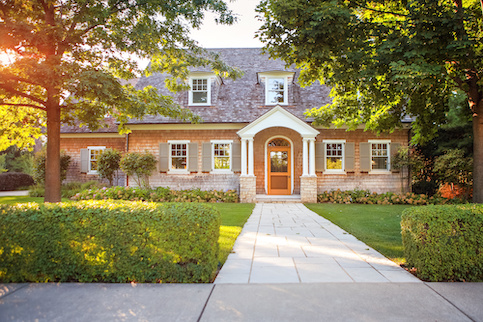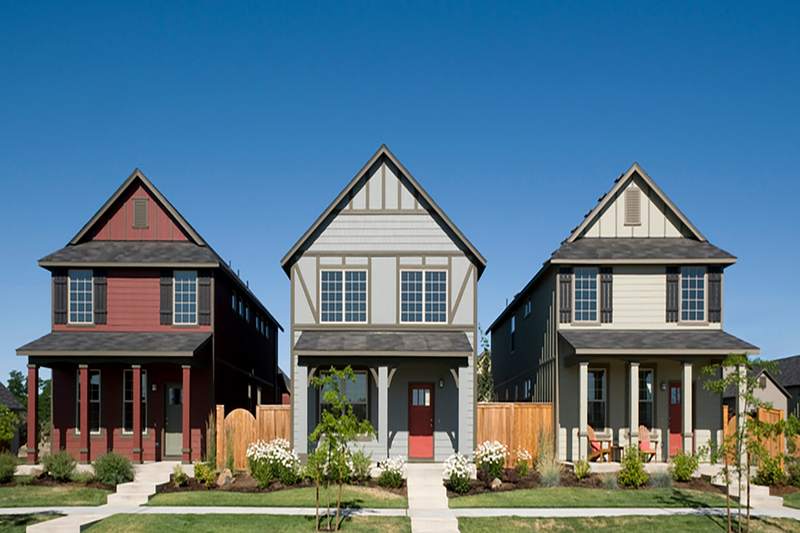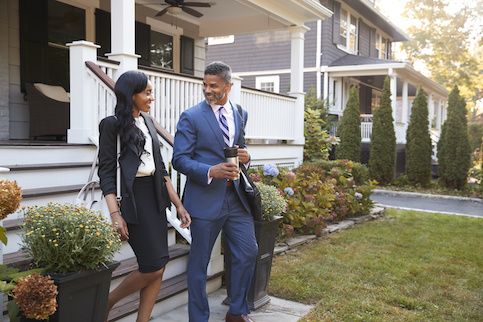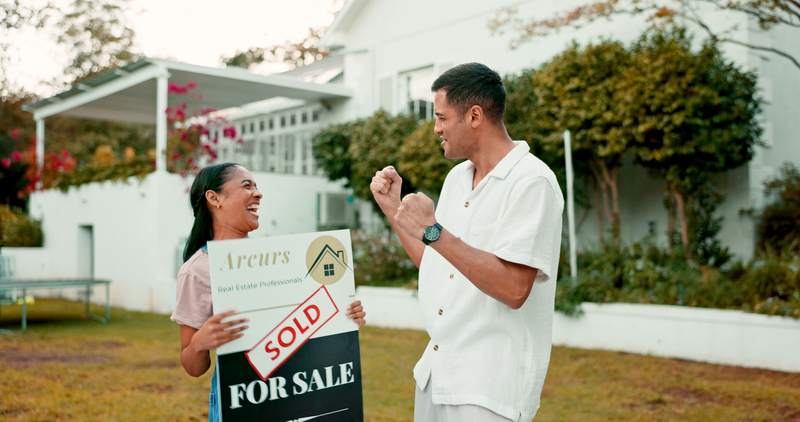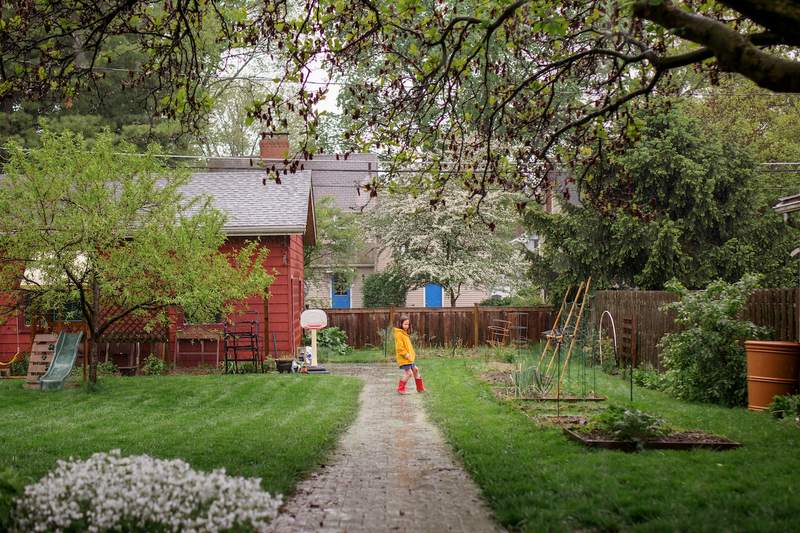Effective Nov. 16, 2025, both Fannie Mae and Freddie Mac no longer require a specific minimum credit score for conventional loan approval. Instead, loan decisions will be based on an analysis of overall credit risk factors.
Rising home prices have made it increasingly difficult for aspiring home buyers to save enough for a down payment and earn the income needed to get a conventional mortgage. The Fannie Mae HomeReady program makes the process easier by offering flexible down payment requirements and an inclusive definition of income to help responsible borrowers in the low- to moderate-income range get a mortgage.
Key Takeaways:
- The HomeReady mortgage program is a conventional loan aimed at borrowers with low to moderate income who want to buy a primary residence.
- HomeReady requires a 3% down payment and allows borrowers to cover it using gift funds, grants and second mortgages. A temporary credit of $2,500 is available for very low-income borrowers.
- The program also credits borrowers for income from boarders, roommates and accessory dwelling units, and will discount private mortgage insurance premiums in some cases.
What Is A HomeReady Loan?
The Fannie Mae HomeReady program is designed to help borrowers with low to moderate income afford a primary residence.
HomeReady loans require a down payment of at least 3% of the purchase price, which is lower than the 3.5% needed for a Federal Housing Administration loan. HomeReady allows you to cover the down payments with funds from multiple sources, including gifts, grants and second mortgages. No personal funds are required.
When evaluating applications, HomeReady lenders will consider nontraditional income, such as boarder income or potential rental income if the property has an accessory dwelling unit.
Available through conventional mortgage lenders, HomeReady loans offer competitive interest rates and lower mortgage insurance premiums for qualified borrowers. HomeReady offers fixed-rate and adjustable-rate mortgages, with terms of up to 30 years.
What’s Your Goal?
Buy A Home
Discover mortgage options that fit your unique financial needs.

Refinance
Refinance your mortgage to have more money for what matters.
Tap Into Equity
Use your home’s equity and unlock cash to achieve your goals.
How The HomeReady Program Works
Fannie Mae created the HomeReady program to offer an alternative to FHA loans. Here are the key features of the HomeReady loan program:
Down Payment Assistance Options
HomeReady loans let borrowers use funds from various sources to cover the 3% minimum down payment and closing costs. Gifts from family or friends, grants and second mortgages are allowed. Fannie Mae offers its own second mortgage program, called Community Seconds, and many state and local governments and organizations offer down payment assistance programs that can be used with a HomeReady loan. For instance, the National Homebuyers Fund provides up to 5% of the mortgage amount to be used for down payment or closing costs.
Temporary $2,500 Credit For Very Low-Income Borrowers
Fannie Mae is offering a temporary credit of $2,500 for borrowers with very low income who qualify for a HomeReady loan. To earn this credit, your total qualifying income must be less than or equal to 50% of the area median income limit for the area where you’re buying a home. The credit will be provided directly through the loan transaction if you qualify. You can use it for the down payment or closing costs, including escrow and mortgage insurance premiums. This credit is available through Feb. 28, 2025.
Allowed Income
The HomeReady program helps borrowers claim income from nontraditional sources when applying for a loan.
This includes potential income from renting out an ADU if the property you’re buying has one, or any units you don’t occupy if you buy a multifamily home such as a duplex. You also may include income from a roommate or boarder who lives with you but will not be on the mortgage or title. Neither type of income is considered with standard Fannie Mae loans.
The program also allows qualified public servants and military personnel to count overtime and part-time income without manual underwriting.
Reduced Mortgage Insurance Premiums
For loans with a loan-to-value ratio between 90% and 97%, HomeReady can reduce the private mortgage insurance requirements. Additionally, PMI is automatically canceled on all HomeReady loans once the borrower has 20% equity in their home.
Ready To Become A Homeowner?
Get matched with a lender that can help you find the right mortgage.
Who Is Eligible For A HomeReady Loan?
To be eligible for a HomeReady loan, borrowers must meet the following criteria:
Income Limits
The borrower’s income must be equal to or less than 80% of the area median income where the home is located. For example, if the AMI in the property’s area is $100,000, then the HomeReady income limit is $80,000. You can look up the AMI for any address online.
Minimum Credit Score
At least one borrower on the loan must have a credit score of at least 620. You may have the option to use alternative credit data, such as payments on rent and utilities, to meet this qualification.
Maximum DTI Ratio
Your debt-to-income ratio is calculated by dividing your total monthly debt payments by your gross monthly income and multiplying by 100. For a HomeReady loan, the DTI can be as high as 50%.
Homeowner Education Requirement
Fannie Mae guidelines say that at least one borrower must complete a homeownership education course from a qualified provider if all borrowers on the loan are first-time buyers. A qualified provider is independent of the lender and supplies homeownership education content that is aligned with National Industry Standards or is offered by a housing counseling agency approved by the U.S. Department of Housing and Urban Development.
Fannie Mae HomeView also can satisfy the requirements for homeownership education. It takes about three to four hours to complete, and you must score at least 80% on the final assessment to receive a certificate of completion. The course can be taken as many times as necessary to pass.
Take The First Step To Buying A Home
Find a lender that will work with your unique financial situation.
HomeReady Guidelines For Properties
The property you plan to buy must meet HomeReady requirements to qualify for a loan:
- A HomeReady loan may be used only to buy a primary residence. This excludes vacation homes and rental properties if the borrower does not live in one of the units.
- The property must be residential. HomeReady does not finance commercial properties.
- The property can be a condominium, co-op or multifamily home with four units or fewer, a detached or attached planned unit development or a manufactured home. These properties can be new or existing construction.
Pros And Cons Of The HomeReady Loan Program
As with any mortgage, it’s important to weigh the pros and cons of a HomeReady program loan to make sure it’s the right one for you.
Pros
The HomeReady program provides several benefits to eligible borrowers:
- Low down payment requirements. The down payment requirement is lower than those for FHA loans and comparable with the minimum down payment for conventional mortgages.
- Lower PMI costs. There’s no upfront mortgage insurance fee, which is required with FHA loans, and PMI premiums are reduced for eligible borrowers. Additionally, PMI is cancelable.
- Flexible co-borrower arrangements. The HomeReady program offers flexible co-borrower arrangements, including nonoccupant borrowers. A nonoccupant borrower is financially eligible to be a borrower on the mortgage but will not live in the home. This means that a parent or other family member can be on the mortgage, and the lender will use their income and liabilities to determine eligibility for the home loan.
Cons
HomeReady loans also have drawbacks to consider:
- Higher credit score requirements. HomeReady’s minimum 620 credit score requirement is higher than other loans geared toward low- to moderate-income borrowers. For example, borrowers who make a 10% down payment can qualify for an FHA loan with a credit score as low as 500.
- Income limits. The HomeReady program has income limits in place for borrowers. Borrowers who make more than the income limit will not be eligible.
- Education course requirement. First-time home buyers are required to take a homeowner education course to qualify for a HomeReady loan.
Comparing The HomeReady Program
Here’s how the HomeReady program compares to other loan types:
HomeReady Vs. Home Possible
Fannie Mae’s HomeReady program and Freddie Mac’s Home Possible program both are designed to make homeownership possible for low- to moderate-income buyers but differ in the details.
- If you are buying a multifamily property, you must provide the 3% down payment without outside help for a HomeReady loan. Home Possible does not have this restriction.
- With Home Possible, you will need a minimum score of 660, or 680 for a rate-and-term refinance. With HomeReady, the minimum score is 620.
HomeReady Vs. FHA Loans
Buyers with lower credit scores whose income exceeds the HomeReady limits might find a better fit with an FHA loan.
- HomeReady loans require a 3% down payment, while FHA loans require 3.5%.
- HomeReady requires a credit score of 620 or above, while FHA loans allow scores as low as 580 for a 3.5% down payment loan and as low as 500 for a 10% down payment loan.
- HomeReady sets income limits of 80% of the AMI. FHA has no such income limits.
- HomeReady requires the completion of a home buyer education course. FHA loans do not.
HomeReady Vs. Conventional Loans
Conventional loans have no income limits and often require higher credit scores.
- Conventional loans typically require a 5% down payment, but it can be as low as 3%.
- Conventional loans allow you to buy second homes and investment properties.
- HomeReady loans are available to low- to moderate-income buyers. Conventional loans are available to all qualified home buyers.
- HomeReady programs require a home buyer education course, while conventional loans do not.
How To Apply For A HomeReady Loan In 5 Steps
Here are five steps to applying for a HomeReady loan:
1. Review Your Finances
Check whether your income and credit score meet the program’s requirements. Remember, the HomeReady program considers nontraditional credit, such as rent, utilities, medical insurance, car insurance, a phone plan and even payments to local stores.
2. Find A Lender
Most lenders offer HomeReady loans, so you should consider factors like the quality of their services and the average interest rates offered. It’s a good idea to shop for a mortgage and get quotes from three to five HomeReady mortgage lenders so you can compare rates and fees.
3. Apply For A Loan
When applying for a mortgage, you’ll need to answer questions and provide documents regarding your income, debts, assets, employment and property.
4. Complete The Education Requirement
The HomeReady program requires borrowers to complete a homeownership education course online or in person.
5. Close On The Sale
Closing on a loan through the HomeReady program is similar to closing a home sale with other mortgage types.
FAQ
Here are answers to common questions about the Fannie Mae HomeReady program:
The Bottom Line
The Fannie Mae HomeReady program is an option for low- and moderate-income borrowers who can afford the minimum down payment. Unlike other types of loans, borrowers have no obligation to use their personal funds for the down payment or closing costs. This program works for first-time and repeat buyers, but make sure you meet income requirements before filling out an application.
More From Quicken Loans:
- Fannie Mae HomeStyle Loans: What Are They And How Do They Work?
- Fannie Mae HomePath Properties: What Are They And How To Buy One
- Types Of Home Loans: A Complete Guide For Buyers
- What Is A Freddie Mac Home Possible Mortgage And Is It Right For You?
- What Is Freddie Mac’s Affordable Seconds Program, And How Can I Buy A Home With 0% Down?
Josephine Nesbit contributed to the reporting of this article.

Terence Loose
Terence Loose is an award-winning journalist who has held editorial positions at national and regional magazines and served as a content analyst and writer for Netflix. His work has appeared in the Los Angeles Times, The Orange County Register, CNBC, Yahoo and HuffPost, among others. He has also taught writing at UCLA, UC Irvine and Netflix.

